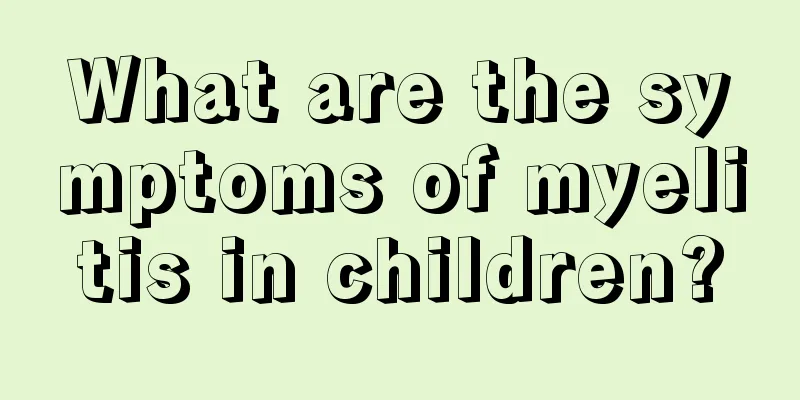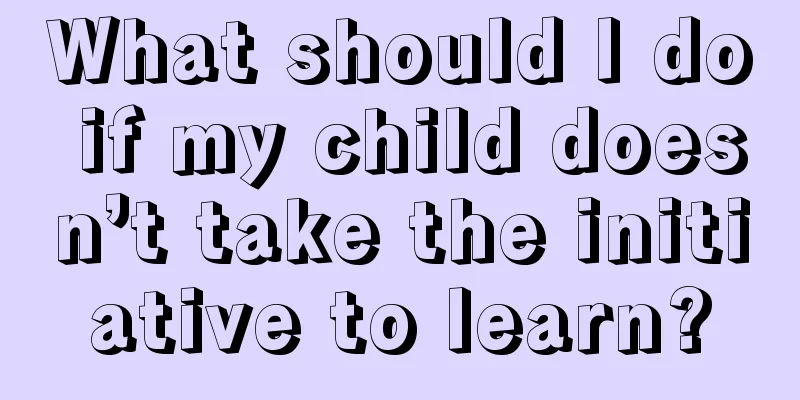What are the symptoms of myelitis in children?

|
The number of people suffering from myelitis is constantly increasing. Only when we understand the symptoms of myelitis in children can we inform the doctor as soon as possible after observing the condition and carry out further examination and diagnosis. After all, the children are still young. If they suffer from long-term illness, it will inevitably cast a shadow on their beautiful childhood and affect their normal development and growth. Early detection and early treatment are necessary. A few days or 1 to 2 weeks before the onset of the disease, there is often a history of upper respiratory tract or intestinal infection, a history of vaccination, or predisposing factors such as cold, overwork, weight bearing, sprains, etc. The disease develops suddenly. Complete paraplegia may occur within a few hours to 1 to 2 days. Some patients have precursor symptoms such as back pain, tightness, limb numbness, and weakness before the onset of the disease, which gradually develop into complete paralysis after a few to ten days. The clinical symptoms of myelitis may vary depending on the location and extent of the lesion. Because the thoracic cord segments are long and the blood supply to some segments is poor, lesions often affect the thoracic cord. The initial symptoms are often numbness and weakness in both lower limbs, back pain in the corresponding part of the lesion, a feeling of tightness, or difficulty urinating. After 2 to 3 days, the disease develops to its peak, with complete paralysis below the level of the lesion, loss of sensation, little or no sweating, and retention of stool and urine. In the early stage of the disease, the patient is in the spinal shock stage and has flaccid paralysis of the limbs, which is the so-called soft paralysis. After 2 to 4 weeks, the limbs gradually become spastic paralysis, also known as scleroplegia, and the urination problem changes from urinary retention to urinary incontinence. When the lesion involves the cervical spinal cord, quadriplegia may occur. If the upper cervical segment (above C4) is affected, breathing difficulties may also occur. Cervical enlarged myelitis may cause flaccid paralysis of both upper limbs and spastic paralysis of both lower limbs. When the lesion is in the lumbar spinal cord, the lower limbs show flaccid paralysis and muscle atrophy can be seen in the early stages. When the lesion is in the cuboid spinal cord, there is obvious sphincter disorder but no obvious paralysis. In addition, there is also an ascending myelitis. This type of myelitis has an acute onset, and the lesions can develop rapidly from bottom to top, often reaching a peak within 1 to 2 days, or even within a few hours. Symptoms include quadriplegia, difficulty swallowing, slurred speech, difficulty breathing, and even respiratory muscle paralysis leading to death. The above article gives a clear introduction to the symptoms of myelitis in children, and I believe everyone has a clear idea of it. Once the disease occurs, you still need to be vigilant and not allow the disease to worsen. In addition, we must also realize that long-term treatment of this disease is inevitable, so we should not be impatient for results, and the principle of combining prevention and treatment must also be followed. |
<<: What to do if a baby has a fever and convulsions?
>>: What are the symptoms of fever and convulsions in children?
Recommend
What to do if baby's stool is watery
Some of the baby's daily metabolism will refl...
What should children eat if they lack vitamins?
Children's physical health is the issue that ...
The right treatment for baby's eyes
The baby's eyes are a little wrong, which oft...
Why does the baby not want to take the nipple?
Some parents will find that their babies don'...
How to enhance your baby's immunity
When a baby is just born, his or her own resistan...
What are the treatments for oral ulcers in children?
In daily life, it is common for children to suffe...
What to do if your child has a cold, cough and yellow phlegm
The symptom of coughing is actually very common. ...
Symptoms of yellowing whites of the eyes in newborns with jaundice
Newborns have relatively poor resistance because ...
What is the reason for black hair on baby's ears?
Some parents find that their babies have black ha...
What are the symptoms of seasonal allergic rhinitis in children?
Many children will have allergic reactions when t...
Why do young children have blood in their stools?
First of all, we have to observe whether the chil...
Two year old baby has blood in stool
Some two-year-old babies will find blood in their...
Things to pay attention to when your child wakes up at night
For children, they should have a relatively peace...
Rehabilitation training methods for language delay
Every parent wants their children to be eloquent ...
Why does a four-month-old baby suck his fingers?
At some point, some parents will find that their ...









